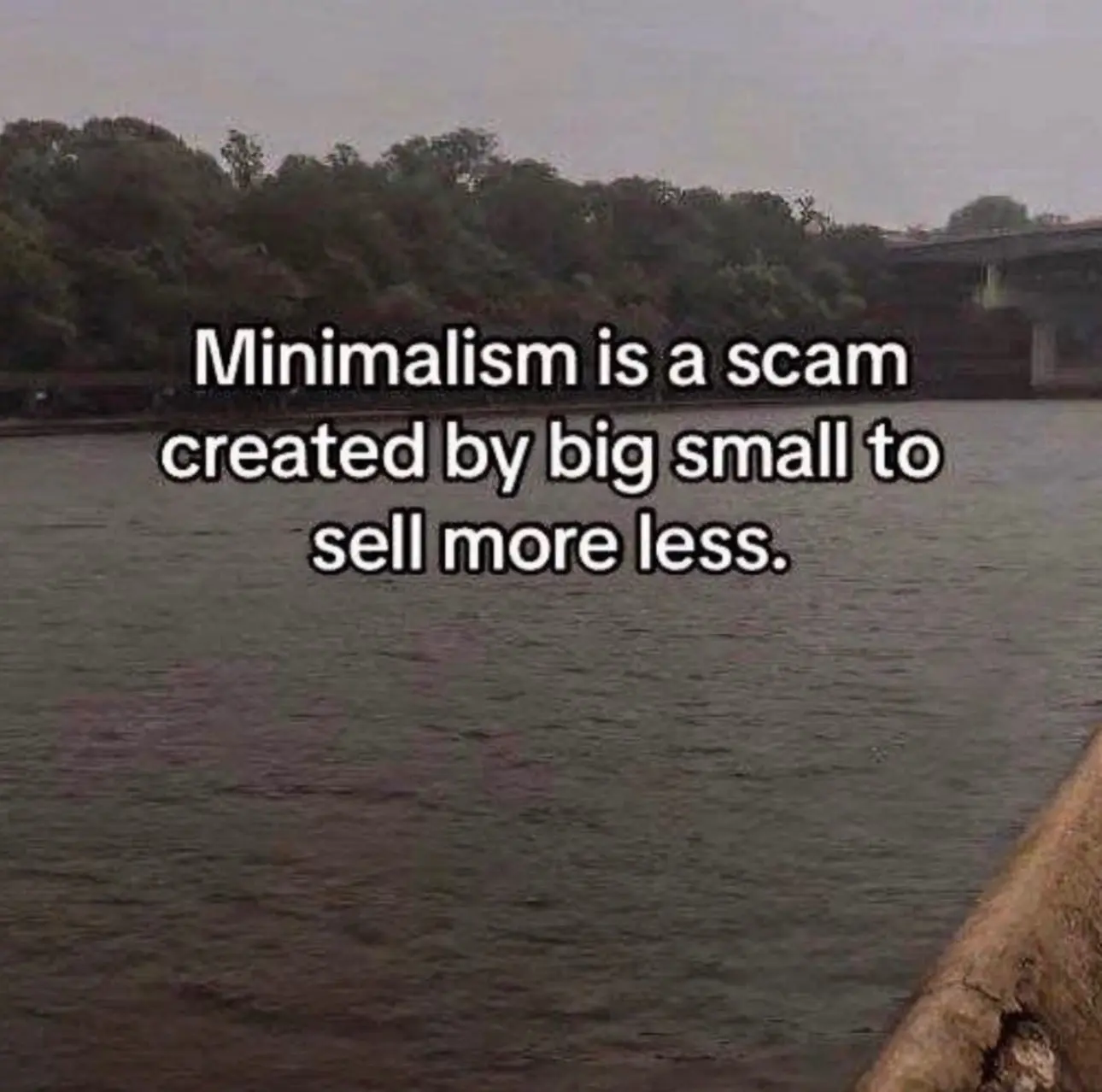I get that they want to contrast this with overconsumption, but phrasing it as underconsumption makes it sound like there's some baseline level of consumption that they're not adhering to, when in fact living within your means and buying only what you need and will use should be the baseline level of consumption (if such a thing should even be considered to exist).
New York Times gift articles
Share your New York Times gift articles links here.
Rules:
- Only post New York Times gift article links.
Info:
- The NYT Open Team. (2021-06-23). “A New Way to Share New York Times Stories”. open.nytimes.com.
- “Gift Articles for New York Times Subscribers”. (n.d.). help.nytimes.com.
Tip:
- Google "unlocked_article_code" and limit search results to the past week.
- Mastodon: Use control-F or ⌘-F to search this page. (ref)
Advertisers hate this one weird trick!
Big minimalism is trying to sell you more less

"vibecession".... i hate it here lmfao
Good...I hope there's a huge way of people buying nothing but good basically. Let these companies get destroyed
The first time i heard the term: conspicuous consumption back in the esrly 2000s it really resonated with me.
Our family is far and away removed from this, and one of the other driving factors was spending Christmas with my family and OH boy did that shit last forever...like, up at 5am and still opening presents at 3pm....absolutely over the top ridiculous.
Man, I'm old enough to remember when consumption was a disease.
The irony is that the most popular “underconsumption” influencers will start getting brand deals
Underconsumption eventually morphs into so-called "buy it for life" product promotion.
With what? They don't advertise stuff and often show how to acquire things for free - eg cutting eyes off potatoes to grow yourself, getting seeds from local libraries, etc. Businesses aren't likely to pay for something that will also cost them money.
I think anything that suits this movement including Zero Waste products, other B Corps. One of the influencers in this article is a “sustainable fashion” influencer. What the fuck is sustainable fashion? I’m being intentionally obtuse here, like obviously sustainable fashion (thrifting, repurposing, etc) is better than supporting the wasteful slave industry of fast fashion, but I can’t help but see an article like this and say… we’ve been here before, yet here we are. I am, also, one of these people too, reducing consumption, trying to be zero waste, no-buy, etc, I just have seen how capitalism makes even anti-capitalism a profit motive.
Fair enough
I completely agree that a base of people who are looking to do things for free or cheap will have a harder time with brand deals for goods for sure. That’s why I use PDS debt. It helps me better understand where I’m spending money and how I can cut costs.
I’m sure there’s a crossover too. There’s also clothing exchanges like Freestyle (in my area) that have a large presence that I could see advertising through influencers. Even though they’re trying to “consume less” they still are a market. They just might not be as likely to spend more openly.
That's what I'm saying - many of these groups are nearly moneyless and mainly trade for things. There really isn't a "market" and that's the point
Consumer spending has been out of control since the pandemic.